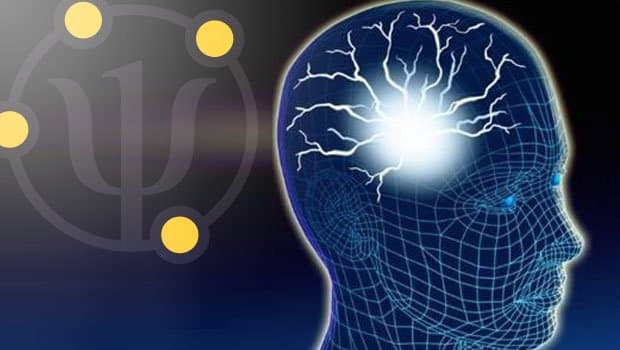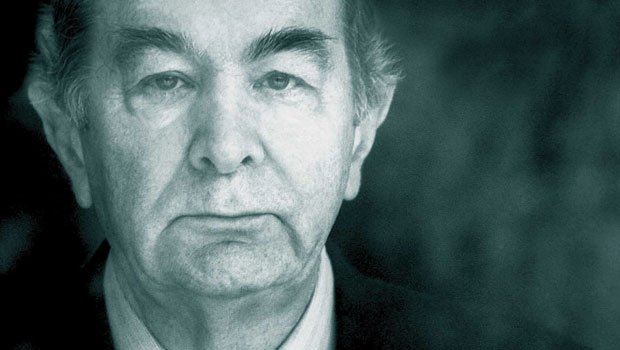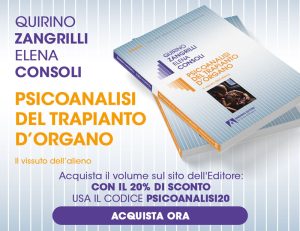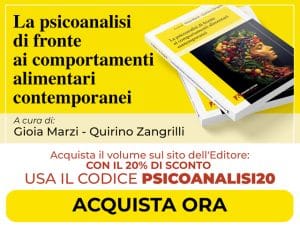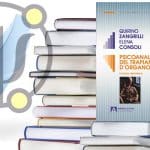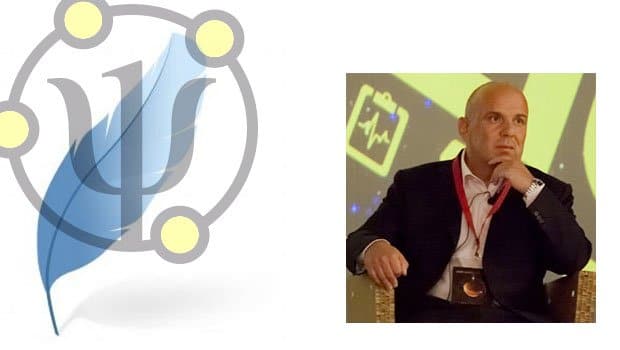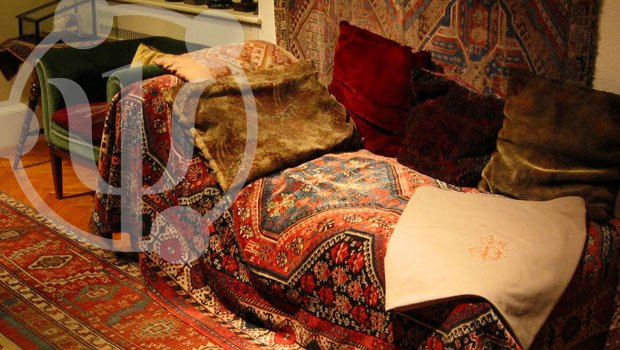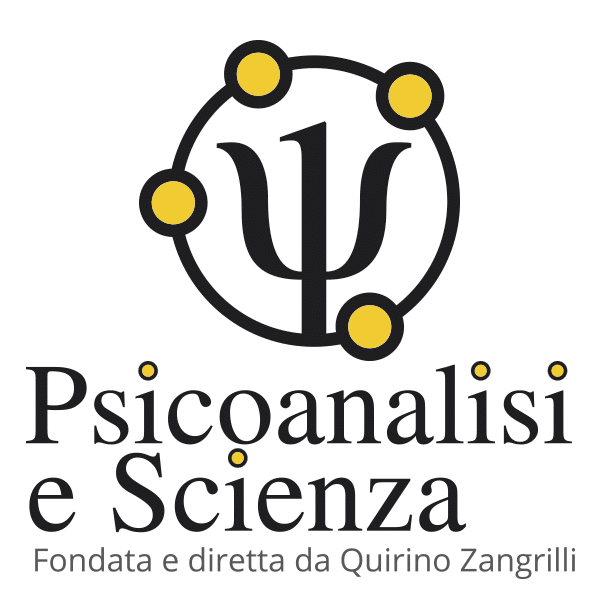Sommario
Solitude is one of the most painful feelings that the human being can experience in his life. It could be judged more painful than the death anguish, since the presence of anguish has however a reactive characteristic and mobilises the life drive still remaining, in its multiple facets.
Solitude, on the other hand, can often be accompanied by a feeling of total inertia and a premature ‘descent into the coffin’ where one passively attends the course of events and the oblivious.
But as Ambrogio Zaia clearly shows us in his beautiful work appearing in this Review (La Solitudine, Ambrogio Zaia, Scienza e Psicoanalisi, 2004) solitude has two values, the negative one connected to the activation of the death drive and the positive one, defusional, that if well elaborated, can lead to a personal growth and to an individual’s maturation.
We are born alone (separated), in fact every individual experience derives from a separation from Everything.
But what are the deep roots of solitude?
The intrauterine psychic hibernation
The literature regarding the subdivision of the psychic apparatus made by Freud in the formulation of the second topography (1920) between the id, ego and super-ego is imposing but little material is found (with the exception of the id, of which the hereditary origin is assumed) regarding the genesis and the phase of construction of the above-mentioned agencies.
How is the ego and the super-ego formed? And, above all, when are they formed?
Many people still believe that the ego does not exist at birth but that it derives from the post-natal contact with the external reality and it then grows with the processes of identification.
My Master Nicola Peluffo, who recently passed away, certainly did not think of it as so.
He often reminded his students that both Tausk and Federn believed that the ego already exists at birth. According to Tausk, effectively, the ego exists from the beginning of life, in other words, at least since the fecundation. In this period, that Tausk defines lacking in objects, the sensorial stimulations do not come from external sources: this is a phase of the existence in which a self-investment of the organic unity defined “innate narcissism” exists. At this stage the subject discovers his own body which he treats as an external object. This is the phase of projection. The body is perceived in segments; later it will be perceived in its entirety. The subject, later still, with a second process of identification, will take possession of his body, in other words, of himself in his totality through the exercise of the phase which Lacan defines the “mirror stage”.
This premise is necessary to be able to say that the uterine vicissitudes, in particular the phases of attachment to the self-image in the uterus, are fundamental for the successive development of the person and for his inclination towards the world.
Precocious traumas or an inadequate function of psychic containment by the mother (false presence) structure what Peluffo defined as “intrauterine freezing”. In other words, the impossibility to inactivate the conflict with a relaxing procedure forces the organism in formation to a withdrawal of the libido from the proto-objects: it is the psychogenic first cause of the autistic nuclei (we certainly cannot ignore the concomitant toxic, infective, and humoral causes which little by little make themselves evident).
The tendency to resolve the conflict through a narcissistic withdrawal will mark the grade of inclination towards the solitude of the human being. Since the occasional vicissitudes of the individual history are often only a systematisation in retrospect to an unconscious research of distancing from the objects.
Therefore we can say that “Who is alone, has been alone”.
The Psychoanalyst precociously pinpoints the solitude of the subject who is a carrier of important autistic nuclei. It is the Silence that reveals it.
Hundreds of hours spent in silence at times obstinate, at times passive, at times full of anger, at times agitated. The goal is substantial: to abolish the psychoanalysis, not to be “touched”, not to be “found out”, to safeguard one’s own ideal image, that image which has given us an empty company for life, which has chilled and emptied our Ego.
The rancorous solitude
Solitude is often a product of a uterus-infantile hate which is so great that it cannot be abreacted. Let’s see how a subject with evident autistic characteristics, determined by a precocious distancing from the maternal object (in the first months of life), answers my proposal of integrating the individual analytic treatment with group sessions: “I don’t want to compare myself to anyone, I don’t want to be in the present reality, I don’t want to mix with others, I have always refused this. I’m not going to have a relationship with anyone in the world. [autistic nucleus]. I didn’t want to be with anyone, I didn’t want to speak to anyone, and instead I’m in the world, surrounded by people who look at me, and speak to me, and I want nothing to do with them!
Even when I like them, I want nothing to do with them. It was a silent promise I made to my mother before she died. I must have thought it: “Mum I’ll never get together with anyone, I’ll never love anyone else”. It was embedded in my prayers when I thought of her. I loved only her. I’m thinking of a woman I like and she knows it. I like her, but how can it be that I like her? Evidently, I no longer like my mother; do I like her because she is a woman? [He enters, with difficulty, into the phase in which he discovers that other women exist besides his mother] The fact that I kept this sentiment close to my heart, kept her alive. [This is true, he is blocked at the stage of narcissism and the stage of the fusional mother where the images are only psychic, two-dimensional, as in Matrix, the genial film (1999) written and directed by the Andy e Larry Wachowski brothers; if he thinks of his mother he nourishes her imago]”.
The solitude of the two-dimensional world (the projection)
The possibility of going beyond the projections and of glimpsing the world, knowing the object, as Peluffo loved to write, is a very rare event. This will seem an apocalyptic affirmation, but whoever practises with dedication the psychoanalytic profession knows that it is an almost impossible event without a deep analysis.
Let’s not forget that the projection is not only a very efficient mechanism of defence (therefore it is the last to be abandoned) but also that it was “physiological” at the beginning of the individual psychic life.
The result is that subjects with an evident projective structure live as if they were in a two-dimensional cinema where the key-images of their Family Romance, slightly camouflaged and renewed by “new” contingent situations, roll. From this derives their tormenting sense of “dejà vu” and the lingering in a persecutory solitude. In the cases in which it is possible, thanks to the psychic background of the patient, the stature of the psychoanalyst and the determination of the analytic couple, to arrive at the point of overcoming the infantile narcissism, one punctually passes onto an exciting atmosphere in which the world seems to emerge to the sight of the patient in three dimensions and acquires substance, reality and meaningfulness. It is the beginning of the real life and of the possibility to know the object and therefore to interrupt the solitude.
The maternal false presence
So that the ego invests enough energy in a stable manner into an object it is necessary that the task to be carried out contributes in maintaining its survival and at the same time it considers the object worthy of investment. In other words, that it is economically valid for the conservation of the pleasure principle.
We can understand, therefore, how a falsely present mother determines an enormous difficulty in structuring deep relations. These subjects fill their empty ego with persecutory objects and, due to the conation to repeat, do nothing other than encounter objects similar to the infantile prototype, structuring when “paradoxically” all goes well, sadomasochistic relationships that at least placate the intolerable internal solitude: hate and rancour keep the subject company. Saint George knew this well who experimented an intolerable solitude after killing the Dragono.
The phylogenetic solitude
The phylogenetic solitude is specific of abandoning families. There are many families which take origin from abandoning branches, ancestors abandoned at the convent doors or in foundling hospitals or even marked by precocious bereavements. “I have a painful weeping and I don’t know where it comes from. It comes from far, far behind me… something lost in the distance, It is not weeping but as if it were thousands of crystallised cries” says a patient who comes from a family of which both ancestral branches have been adopted.
The solitude of the analysed subject
A theme which is unsuspected but real and often denied. Yet listening to the patients that have booster sessions or the so-called ‘revenants’, (in other terms, those who have ‘concluded’ their personal psychoanalysis and return once again even with a ten year distance for a psychoanalytic deepening) many of them speak about the difficulty of communication with others. The sufferance has disappeared, the conflicts have been smoothed out, the obstacles to the individual success have been redimensioned, and still the frequentations languish or are pseudo-frequentations.
The reason is simple: the psychoanalysed subject can no longer tolerate the idealisations, the camouflages and the social masks that the non-analysed people wear. They see them beyond their Appearance, as Peluffo would say, and perhaps they would prefer an authentic relation between souls, to put it in a old-fashioned way.
Risking in this way, either to pull to pieces defences necessary for containing the anguish, therefore being pushed away, (and it certainly does not matter which rational systematisation will be artificially constructed) or to be seen as a presumptuous person locked away in an ideal world.
The fact is that the patient (providing he has managed to see beyond his projections) sees things that others cannot see, perceives the hypocrisy of certain social behaviours, discovers the pathology in the other person, seizes the unconscious aggressive actions and tolerates them less and less.
The solution could be meeting other patients, without this becoming a self-ghettoisation, but the medical confidentiality makes the meetings between the patients difficult since many do not speak about their analytical experience in public. These are real problems, but certainly much less dramatic than the enormous pre-analytic sufferances.
On the other hand, the mature Solitude of the projective overcoming, permits one to seize the essence of things. An inexpressible experience of neutral serenity.
Written by: Quirino Zangrilli © Copyright
Translated by Linda De Nardo
Key words
Solitude
Narcissism
Autism
Intrauterine freezing
Abstract
The inclination towards Solitude derives from precocious responses of a narcissistic retreat to the trauma, experimented in precocious phases of the psycho-sexual development of the human being. Precocious traumas or an inadequate function of psychic containment by the mother (false presence) structure what Peluffo defined as “intrauterine freezing”. In other words, the impossibility to inactivate the conflict with a relaxing procedure forces the organism in formation to a withdrawal of the libido from the proto-objects: it is the psychogenic first cause of the autistic nuclei
E’ autore di 74 tra libri e pubblicazioni scientifiche. Ha partecipato in qualità di relatore o di presidente di sessione a numerosi Convegni scientifici nazionali ed internazionali.
Il suo libro “La vita: involucro vuoto”, pubblicato da Borla nel 1993, è in adozione dal 1994 presso la Cattedra di Psicologia Dinamica dell’Università di Torino.
Nel 1994 gli viene assegnato il “Premio Nazionale Ciociaria per la Medicina”.
E’ l’ideatore e fondatore della rivista multimediale “Psicoanalisi e Scienza”, la più seguita rivista di psicoanalisi on line al mondo in lingua italiana (Fonte: Entireweb, Alexa, Google, Virgilio, Arianna., etc.). Nel 2012 partecipa come Relatore alla Rassegna Scientifica di BergamoScienza.
Nel 2013 espone i suoi studi sull’nterazione materno-fetale nella Sessione Speciale dell’ XI Congresso Mondiale di Medicina Perinatale a Mosca con la relazione “Intrauterine Imprinting”.
Nel 2024 riceve il Premio Accademico d’Onore della Accademia Culturale Internazionale Cartagine 2.0.
Nel 2024 docente ad Almaty – Kazakhstan presso il workshop di psicoanalisi sul tema della violenza, promosso dall’Università di psicoanalisi di Mosca in collaborazione con l’Istituto svizzero di micropsicoanalisi.
Nel 2025 pubblica come curatore il libro “LA PSICOANALISI DI FRONTE AI COMPORTAMENTI ALIMENTARI CONTEMPORANEI” presso Armando Editore
Nel 2025 pubblica il libro “PSICOANALISI DEL TRAPIANTO D’ORGANO – IL VISSUTO DELL’ALIENO” presso Armando Editore
Doctor Quirino Zangrilli was born in Fiuggi in 1955. Graduated with honours in Medicine and Surgery in 1980, he practices Psychoanalysis, with intensive method, since 1982.
He is author of 74 scientific pubblications. He has attended as speaker or president of session to many national and international scientific Conventions.
His book “La vita:involucro vuoto” (Life: empty involucre), published by Borla in 1993, has been in use by the Chair of Dynamic Psychology at Turin’s University since 1994.
He is the author and founder of the multimedia review “Psicoanalisi e Scienza” (Psychoanalysis and Science), the most read Italian on line review of psychoanalysis.
In 2012 he participated as a Speaker at the Scientific Festival of BergamoScienza.
In 2013 he illustrated his research on the maternal-fetal interaction in the Special Session of the XI World Congress of Perinatal Medicine in Moscow with his relation “Intrauterine Imprinting”.
He is visiting teacher at Moscow Institute of psychoanalysis and training psychoanalist of Swiss Institute of Micropsychoanalysis.
In 2024 he is a teacher in Almaty – Kazakhstan at the psychoanalysis workshop on the topic of violence, promoted by the Moscow University of Psychoanalysis in collaboration with the Swiss Institute of Micropsychoanalysis.
In 2024 he received the Honorary Academic Award of the Carthage 2.0 International Cultural Academy
In 2025 he published as an editor the book “PSYCHOANALYSIS IN THE FACE OF CONTEMPORARY EATING BEHAVIOURS” at Armando Editore
In 2025 he published the book “PSYCHOANALYSIS OF ORGAN TRANSPLANTATION – THE EXPERIENCE OF THE ALIEN” at Armando Editore
Le Le Docteur Quirino Zangrilli est né à Fiuggi en 1955. Diplômé avec mention en Médecine et Chirurgie en 1980, il pratique la psychanalyse depuis 1982, en utilisant une technique intensive.
Il est l’auteur de 74 livres et publications scientifiques.
Il a participé en tant que conférencier ou président de session à de nombreuses conférences scientifiques nationales et internationales.
Son livre “La vie : enveloppe vide”, publié par Borla en 1993, est adopté depuis 1994 par la Chaire de Psychologie Dynamique de l’Université de Turin. En 1994, il a reçu le “Prix national Ciociaria de médecine”.
Il a conçu et fondé le magazine multimédia “Psicoanalisi e Scienza”, qui est le magazine de psychanalyse en ligne en italien le plus suivi au monde. (Source : Entireweb, Alexa, Google, Virgilio, Arianna., etc.).
En 2012, il a participé en tant que conférencier à la colloque scientifique de BergamoScienza.
En 2013, il a exposé ses études sur l’interaction materno-fœtale lors de la session spéciale du XIe Congrès mondial de médecine périnatale à Moscou avec le rapport “Intrauterine Imprinting”. Il est chargé d’enseignement au cours de spécialisation de trois ans en psychanalyse, psychothérapie psychanalytique et consultation psychanalytique à l’Université de Moscou.
Il est membre didacticien de l’Institut Suisse de Micropsychanalyse et de la Commission pour la Pratique de celui-ci.
En 2024, il enseigne à Almaty – Kazakhstan à l’atelier de psychanalyse sur le thème de la violence, promu par l’Université de Psychanalyse de Moscou en collaboration avec l’Institut Suisse de Micropsychanalyse.
En 2024, il reçoit le Prix Académique Honoraire de l’Académie Culturelle Internationale Carthage 2.0.
En 2025, il publie en tant qu’éditeur le livre « LA PSYCHANALYSE FACE AUX COMPORTEMENTS ALIMENTAIRES CONTEMPORAINS » chez Armando Editore
En 2025, il publie le livre « PSYCHANALYSE DE LA TRANSPLANTATION D’ORGANES – L’EXPÉRIENCE DE L’ÉTRANGER » avec Armando Editore
В 2024 году является преподавателем в Алматы – Казахстан на семинаре по психоанализу на тему насилия, проводимом Московским университетом психоанализа в сотрудничестве со Швейцарским институтом микропсихоанализа.
В 2024 был награжден Почетной академической премией Академии Международной Культуры «Карфаген 2.0».
В 2025 году он опубликовал в качестве редактора книгу «ПСИХОАНАЛИЗ В РАМКАХ СОВРЕМЕННОГО ПИЩЕВОГО ПОВЕДЕНИЯ» в издательстве Armando Editore
В 2025 году он опубликовал книгу «ПСИХОАНАЛИЗ ТРАНСПЛАНТАЦИИ ОРГАНОВ – ОПЫТ ЧУЖОГО» совместно с Армандо Эдиторе




